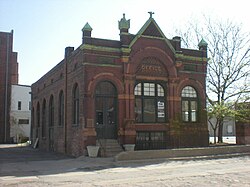
Anheuser-Busch Companies, LLC, is an American brewing company headquartered in St. Louis, Missouri. Since 2008, it has been wholly owned by Anheuser-Busch InBev SA/NV, now the world's largest brewing company, which owns multiple global brands, notably Budweiser, Michelob, Stella Artois, and Beck's.

Joseph Schlitz Brewing Company is an American brewery based in Milwaukee, Wisconsin, and was once the largest producer of beer in the United States. Its namesake beer, Schlitz, was known as "The beer that made Milwaukee famous" and was advertised with the slogan "When you're out of Schlitz, you're out of beer". Schlitz first became the largest beer producer in the US in 1902 and enjoyed that status at several points during the first half of the 20th century, exchanging the title with Anheuser-Busch multiple times during the 1950s.

Adolphus Busch was the German-born co-founder of Anheuser-Busch with his father-in-law, Eberhard Anheuser. He introduced numerous innovations, building the success of the company in the late 19th and early 20th centuries. He became a philanthropist, using some of his wealth for education and humanitarian needs. His great-great-grandson, August Busch IV, is a former CEO of Anheuser-Busch.

Joseph Schlitz was a German-American entrepreneur who made his fortune in the brewing industry.

Bass Brewery was founded in 1777 by William Bass in Burton-upon-Trent, Staffordshire, England. The main brand was Bass Pale Ale, once the highest-selling beer in the UK. By 1877, Bass had become the largest brewery in the world, with an annual output of one million barrels. Its pale ale was exported throughout the British Empire, and the company's red triangle became the UK's first registered trade mark.
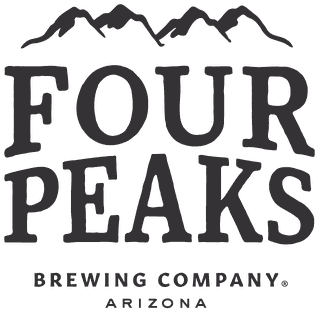
Four Peaks Brewing Co. is an Arizona brewery that was founded by Andy Ingram, Jim Scussel, and Randy Schultz in 1995 and opened to the public on December 11, 1996. The company is headquartered in the historic former Borden Co. Creamery and Ice Factory on 8th Street in Tempe, Arizona, about one-half mile (800 m) east of the campus of Arizona State University.
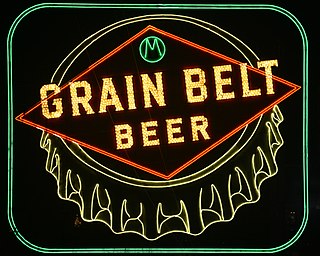
Grain Belt is a brand of beer brewed in the American state of Minnesota, by the August Schell Brewing Company. The beer has been produced in a number of varieties. Grain Belt Golden was the original style introduced in 1893. The current offerings are: Grain Belt Premium, first introduced in 1947; Grain Belt Premium Light; Grain Belt Nordeast, introduced on April 7, 2010; and the newest offering, Grain Belt Lock & Dam, introduced in 2016. It was originally produced by the Minneapolis Brewing Company which formed with the merger of four smaller brewers in 1891. Soon after introduction, Grain Belt became the company's flagship product. It was brewed at the original Grain Belt brewery in Minneapolis, Minnesota until 1976. A series of other owners followed, and Schell took over the product line in 2002.

The Budweiser trademark dispute is an ongoing series of legal disputes between two beer companies who claim trademark and geographic origin rights to the name "Budweiser". The dispute has been ongoing since 1907, and has involved more than 100 court cases around the world. As a result, Budweiser Budvar has the rights to the name Budweiser in most of Europe and Anheuser-Busch InBev has this right in North America. Consequently, AB InBev uses the name "Bud" in most of Europe and Budvar sells its beer in North America under the name "Czechvar". In other territories, one or the other or even both may use the name, depending on local trademark law.

Budweiser Budvar is a brewery in the Czech city of České Budějovice, best known for its original Budweiser or Budweiser Budvar pale lager brewed using artesian water, Moravian barley and Saaz hops. Budweiser Budvar is the fourth largest beer producer in Czechia and the second largest exporter of beer abroad.
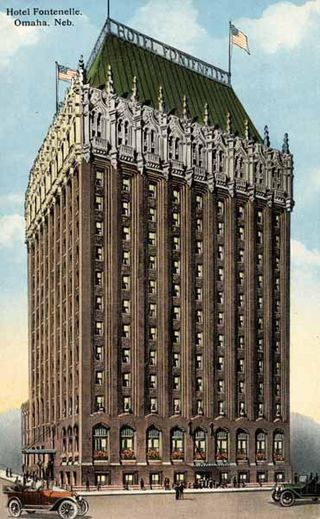
The history of Omaha, Nebraska, began before the settlement of the city, with speculators from neighboring Council Bluffs, Iowa staking land across the Missouri River illegally as early as the 1840s. When it was legal to claim land in Indian Country, William D. Brown was operating the Lone Tree Ferry to bring settlers from Council Bluffs to Omaha. A treaty with the Omaha Tribe allowed the creation of the Nebraska Territory, and Omaha City was founded on July 4, 1854. With early settlement came claim jumpers and squatters, and the formation of a vigilante law group called the Omaha Claim Club, which was one of many claim clubs across the Midwest. During this period many of the city's founding fathers received lots in Scriptown, which was made possible by the actions of the Omaha Claim Club. The club's violent actions were challenged successfully in a case ultimately decided by the U.S. Supreme Court, Baker v. Morton, which led to the end of the organization.
The Storz Brewing Company was located at 1807 North 16th Street in North Omaha, Nebraska. Established from a company started in 1863, Storz Brewing began in 1876 by Gottlieb Storz and was owned by the Storz family until 1966; the brewery ceased operations in 1972. Their beers won several prizes in international competitions, and Storz was the top selling brand in Nebraska starting in World War II. Storz was one of the "Big 4" brewers located in Omaha, which also included the Krug, Willow Springs and Metz breweries. On August 8, 2013, it was announced the brand would be revived by Tom Markel, nephew of Monnie Storz Markel, the granddaughter of Gottlieb Storz, with his cousin John Markel, son of Monnie Storz Markel as investor.
The Fred Krug Brewery was located at 2435 Deer Park Boulevard in Omaha, Nebraska. Founded in 1859, Krug Brewery was the first brewery in the city. Krug was one of the "Big 4" brewers located in Omaha, which also included the Storz, Willow Springs and Metz breweries. Later sold to Falstaff in 1936, the facility closed in 1987.

Frederick Krug was the German-immigrant founder of the Frederick Krug Brewing Company of Omaha, Nebraska. Krug is often cited as one of the early settlers of Omaha. In addition to operating the brewery for almost the entire duration of his life, Krug operated Krug Park in the Benson community and was the president of the Home Fire Insurance Company, which was founded in Omaha in 1884.

Anheuser-Busch Brewery is a brewery complex in St. Louis, Missouri. It was opened in 1852 by German immigrant Adolphus Busch. It a National Historic Landmark District. The Lyon Schoolhouse Museum is on the grounds at the Anheuser-Busch Brewery. It is considered to be one of oldest school buildings in St Louis. It served as the head offices of the brewery after 1907. The museum contains rare mementos gathered from the founding of the company to current day, including pictures of the brewery and its expansion over the years. The 142 acres (57 ha) property includes 189 buildings. Some of the most striking are red brick Romanesque architecture with crenelated towers and elaborate ornamentation.
Anheuser-Busch InBev SA/NV, commonly known as AB InBev, is a Belgian multinational drink and brewing company based in Leuven, Belgium and is the largest brewer in the world. In 2023, the company was ranked 72nd in the Forbes Global 2000. Additionally, AB InBev has a global functional management office in New York City, and regional headquarters in São Paulo, London, St. Louis, Mexico City, Bremen, Johannesburg, and others. It has approximately 630 beer brands in 150 countries.
InBev was a brewing company that resulted from the merger between Belgium-based company Interbrew and Brazilian brewer AmBev which took place in 2004. It existed independently until the acquisition of Anheuser-Busch in 2008, which formed Anheuser-Busch InBev. InBev had operations in over 30 countries and sales in over 130 countries. In 2006, it had a market capitalization of €30.6 billion and net profit of €3.2 billion on sales of €13.3 billion.
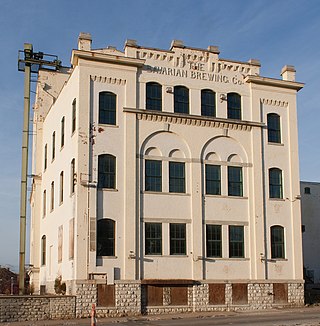
Bavarian Brewing Company was a brewery established in Covington, Kentucky, in 1866 by Julius Deglow, but became known as the Bavarian Brewery around 1870. The brewery was originally located on Pike Street, but expanded to 12th Street within a decade. After John Meyer acquired the brewery in 1881, he sold an interest to William Riedlin in 1882. The company operated under the proprietorship of Meyer & Riedlin starting in 1884, before becoming incorporated as the Bavarian Brewery Co. in 1889 by William Riedlin. The company was family owned until it was acquired by International Breweries, Inc.(IBI) in 1959. However, it operated as the Bavarian Division of IBI and continued to produce its flagship beer, Bavarian's, until the facility closed in 1966. The property was placed on the National Register of Historic Places and renovated as a multipurpose complex for food, beverage and entertainment uses in 1996. It operated as the Brew Works at the Party Source and Jillian's, but closed in 2006. The former structure containing the Brew and Mill Houses, built in 1911, was repurposed into office space becoming part of the Kenton County Government Center, opening in 2019. This office complex has a Bavarian Brewery Exhibit and it is accompanied by a Bavarian Brewery website.
Henry Voss was an architect who was born in Germany and began his architectural practice in that country. He emigrated to the United States in 1871 and settled in Omaha, Nebraska in 1873. He maintained a successful architectural practice in Omaha for more than 30 years.
Rocheford & Gould were brick manufacturers and construction contractors in early Omaha, Nebraska. The firm built numerous brick structures during Omaha's transition from the wooden buildings of Nebraska's territorial days to more permanent structures. The buildings the firm built included breweries, schools, packing houses, business blocks, Vaudeville theaters, street car barns and power houses, and civic buildings. Many of the structures the firm built have been demolished but a few of their earliest structures still exist and are listed on the National Register of Historic Places.
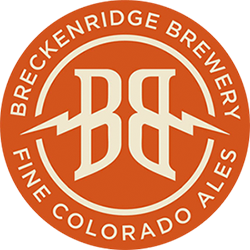
Breckenridge Brewery is an American brewing company based in Littleton, Colorado. Select beers can be found in 42 US states. The company was purchased by Anheuser-Busch InBev in 2016 and resold to Tilray in 2023.
